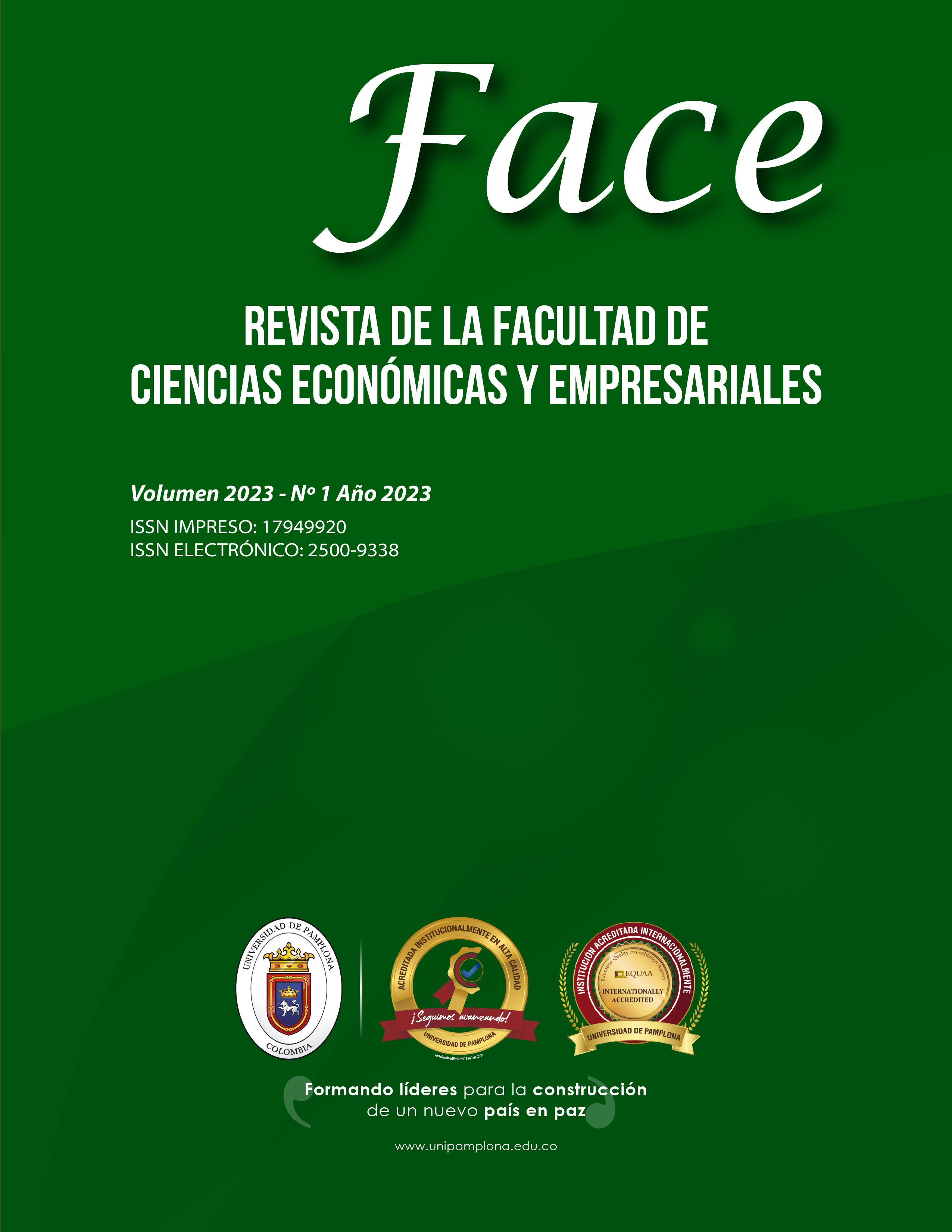importance of promoting economic and financial education in educational institutions Francisco de la Villota at Genoy municipality of Pasto
DOI:
https://doi.org/10.24054/face.v23i1.2449Keywords:
Financial Education, Savings, Income, expenses, entrepreneurshipAbstract
This paper is the result of the research: Analysis of economic and financial education in four locations of the Francisco de la Villota Educational Institution, at the Preschool and Basic Primary levels of the Genoy district of the Municipality of Pasto. The principal objective was to promote economic and financial education in educational institutions. Closely related to the epistemological nature and the conditions of the object of study in the social sciences, this research project has been designed under the parameters of the qualitative research paradigm, this allows us to study the reality of the context and obtain optimal results and easy to understand. The process of Analysis of Economic and Financial Education in the Municipal Educational Institution of the Genoy corregimiento in the Municipality of Pasto, shows that it is important to implement adequate strategies in the learning process of Economic and Financial Education, in such a way that contribute to the proper management of resources from an early age. Due to the above, adequate strategies of Economic and Financial Education (EEF) are formulated, which determine a progressive, transversal and continuous training, in this way awareness is created about the values that are related to human rights, taking into account the analysis that was carried out in the Francisco de la Villota Municipal Educational Institution, it was determined that 80% of the teachers surveyed have the conception of the importance of economic and financial education in the formation of children and young people. In this way, changes are generated in attitudes and perspectives regarding the economic or labor role, creating awareness in them to make an adequate and efficient management of economic resources.
Downloads
References
Asobancaria (2016). What sense does Financial Education have for children? http://www.asobancaria.com/sabermassermas/que-sentido-tiene-la-educación-financiera-para-los-niños/
Intersectoral Commission for Economic and Financial Education. (2017). The National Strategy for Economic and Financial Education (CIEEF): a proposal for implementation in Colombia. http://www.urf.gov.co/webcenter/ShowProperty?nodeId=/ConexionContent/WCC_CLUSTER-141922
Cervantes-Barraza, J., and Cabañas-Sánchez G. (2018). Formal and visual arguments in geometry class at primary level, Mathematics Education, Vol. 30, Nº 1, p. 163-183. DOI: https://doi.org/10.24844/EM3001.06
García, N., Grifoni, A. López, J. and Mejía, D. (2013). Financial education in Latin America and the Caribbean Current situation and prospects. https://www.oecd.org/daf/fin/financialeducation/oecd_caf_financial_education_latin_americaes.pdf
Garcia, N. (2012). The impact of economic and financial education on young people: the case of Finance for Change.
Gamboa, M., Hernández, C. and Avedaño, W. (2019). The importance of financial education for school-age children. Spaces Magazine, vol. 40, no. 6-17.
Herrera, E. and Raccanello, K. (2014). Education and financial inclusion, Latin American Journal of Educational Studies (Mexico), vol. 2, no. 119- 141.
Rivas, E. and Parra, H. (2017). Importance of financial education in social development. Degree work, Cooperative University of Colombia. Faculty of Public Accounting
Villada, Fernando, López-Lezama, Jesús M, & Muñoz- Galeano, Nicolás. (2017). The Role of Financial Education in the Training of Engineering Professionals. University Education, 10(2), 13-22. https://dx.doi.org/10.4067/S0718-50062017000200003 DOI: https://doi.org/10.4067/S0718-50062017000200003
Downloads
Published
How to Cite
Issue
Section
License
Copyright (c) 2023 FACE: Revista de la Facultad de Ciencias Económicas y Empresariales

This work is licensed under a Creative Commons Attribution-NonCommercial-ShareAlike 4.0 International License.





